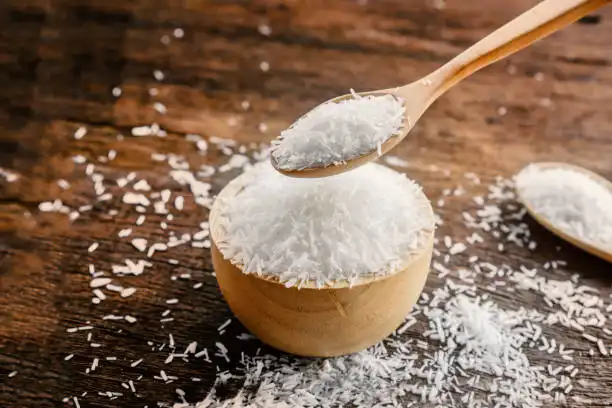L-Glutamic Acid: Nature's Flavor Enhancer
L-glutamic corrosive is an amino corrosive that assumes a critical part in different organic cycles. As one of the 20 proteinogenic amino acids, it fills in as a structure block for proteins in our bodies. Past its primary capability, L-Glutamic Corrosive is famous for its flavor-improving properties, adding to the appetizing taste known as umami.
In nature, L-Glutamic Acid is bounteously found in protein-rich food varieties like meat, fish, and certain vegetables. It is also found in aged cheeses and fermented products like soy sauce. The human body can create L-Glutamic Corrosive all alone, ordering it as an unnecessary amino corrosive.
L-Glutamic Corrosive's importance stretches out past its part in flavor improvement. It fills in as a synapse in the focal sensory system, working with the transmission of signs between nerve cells. This double capability as both a flavor part and a neurological courier highlights its significance in our physiology and culinary encounters.

Monosodium Glutamate: The Controversial Cousin
Monosodium glutamate, ordinarily known as MSG, is a sodium salt of glutamic corrosive. It's made when the amino acid glutamic acid joins with sodium to shape a more steady compound. MSG was first separated by Japanese physicist Kikunae Ikeda in 1908, who distinguished it as the wellspring of the particular appetizing flavor in kombu kelp.
Since its disclosure, MSG has turned into a broadly involved flavor enhancer in the food business. It enhances the umami flavor of a variety of processed foods, condiments, and restaurant dishes. Regardless of its ubiquity in culinary applications, MSG has been a subject of debate because of worries about potential unfavorable well-being impacts.
The contention encompassing MSG comes from reports of the "Chinese Eatery Condition," an assortment of side effects a few people guarantee to encounter in the wake of devouring MSG-rich food sources. These side effects might incorporate migraines, flushing, and perspiring. Notwithstanding, logical examinations have neglected to lay out a reliable connection between MSG utilization and these revealed impacts on everyone.

Distinguishing Between L-Glutamic Acid and MSG
While L-glutamic corrosive and MSG are connected, they are not indistinguishable substances. The key distinctions lie in their compound construction, beginning, and how they're used in food and the body.
L glutamic acid powder is an amino corrosive that happens normally in numerous food varieties and inside our bodies. It's an indispensable part of proteins and serves different natural capabilities. Interestingly, MSG is an item made by consolidating glutamic corrosive with sodium. While MSG contains glutamate, a similar part liable for the umami flavor in L-Glutamic Corrosive, it's in a more focused and promptly accessible structure.
From a culinary viewpoint, L-Glutamic Corrosive adds to the regular exquisite kind of food sources without being added as a different fixing. MSG, then again, is deliberately added to food sources to improve their taste. This qualification is pivotal for people who might be delicate to added MSG yet can endure normal happening glutamates in food.
As far as wellbeing ramifications, L-Glutamic Corrosive is for the most part thought to be protected and gainful as a feature of a fair eating routine. A fundamental amino corrosive backings various physical processes. MSG, while considered protected by administrative organizations, stays questionable because of episodic reports of awareness in certain people.
It's quite important that when L-Glutamic Corrosive is available in free structure (not bound to proteins) in food sources, it can taste really comparable upgrading impact to MSG. Because of this, some foods, like ripe tomatoes and Parmesan cheese, that are high in free glutamates naturally have a strong umami flavor.
L-glutamic acid and MSG are also made in different ways. L-Glutamic Corrosive can be obta through different means, including extraction from protein hydrolysates or maturation processes utilizing microorganisms. Most of the time, MSG is made by fermenting carbohydrates with bacteria, then isolating and purifying glutamic acid and neutralizing it with sodium hydroxide to make MSG.
As we explore the universe of food added substances and normal mixtures, moving toward the subject with a receptive outlook and a promise to logical understanding is fundamental. Whether you're a food fan, a wellbeing cognizant customer, or just interested about the science behind your feasts, diving into the subtleties of substances like L-Glutamic Corrosive and MSG can improve your culinary information and illuminate your dietary decisions.
Conclusion
While L-Glutamic Acid and MSG are connected, they are particular substances with various beginnings, uses, and discernments in the food business and among shoppers. L-Glutamic Corrosive is a normally happening amino corrosive fundamental for different organic capabilities and adding to the umami flavor in food varieties. MSG, a sodium salt of glutamic corrosive, is a made flavor enhancer that focuses the umami taste.

L-Glutamic acid exists as a white crystalline powder under standard conditions. It is soluble in water but has limited solubility in alcohol and other organic solvents. One notable physical characteristic is its ability to exist in different isomeric forms, but the L-isomer is the biologically active form in humans and other animals.
For those keen on becoming familiar with L-Glutamic Corrosive, its properties, and applications in the food and biotechnology businesses, HSF Biotech offers broad ability and item data. Our L-Glutamic Corrosive is delivered through cutting edge microbial maturation strategies, guaranteeing top notch and virtue. This flexible amino corrosive tracks down applications in different areas, including food upgrade, drug details, and wholesome enhancements. Please contact us at aaron@healthfulbio.com for more information about our L-Glutamic Acid products, including their chemical and physical properties.

